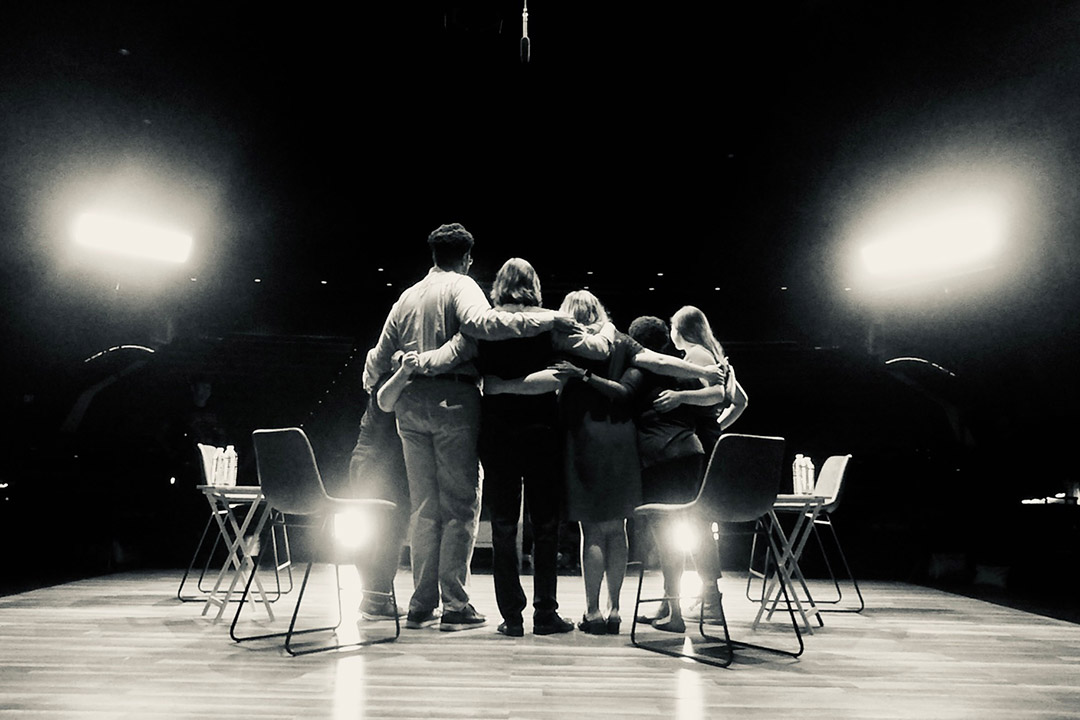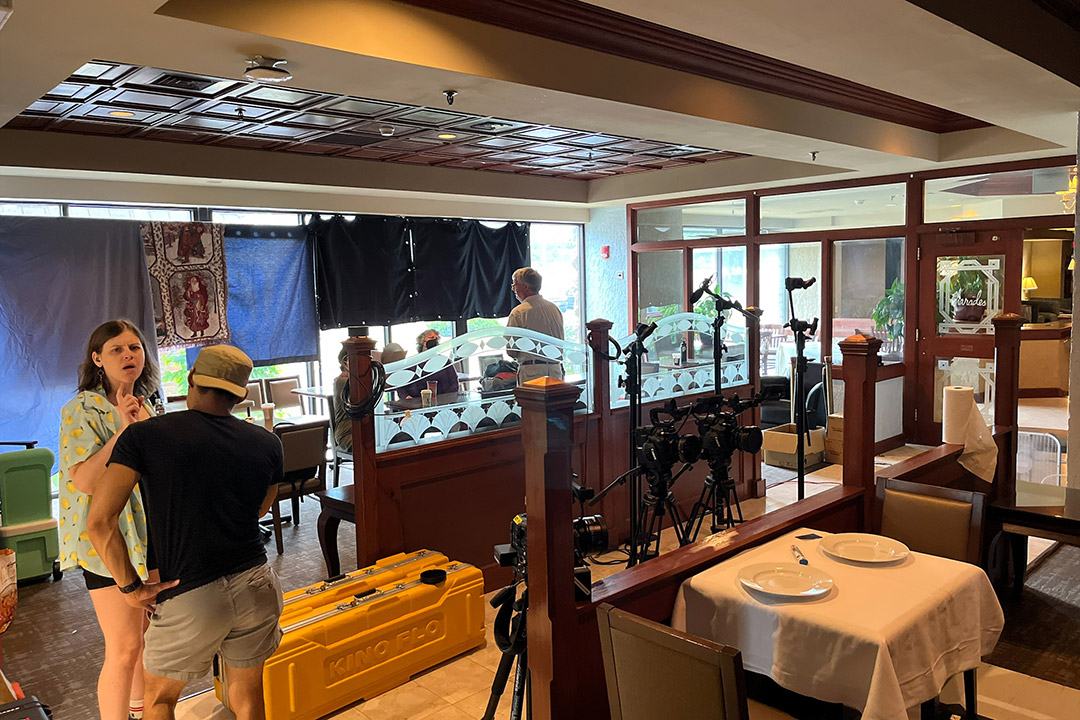Award-winning Morpheyes Studio expands the authentic representation of Deaf people in media
Morpheyes Studio, a Deaf-led production studio at RIT/NTID, developed the docuseries ‘Deaf And…’ which examines Deaf culture in America. The studio uses Deaf cast and crew members.
RIT graduate Liam Coleman was looking for a way to express how it feels to be caught within one’s own thoughts about navigating identity. As a Deaf person, Coleman ’19 (individualized program) questioned the role that signing or voicing plays with how they interact with the world and their gender expression.
By working with a production studio fully operated by Deaf students and faculty, Coleman humorously tackled the subject through their short film Inner Dialogue.
The award-winning Morpheyes Studio at Rochester Institute of Technology’s National Technical Institute for the Deaf was developed by seven students in 2019 to expand the authentic representation of Deaf people in film by empowering them to lead production processes from conception to completion. The studio assists with videography, screenwriting, graphic design, motion design, creative storytelling, and media accessibility, among other services.
Morpheyes Studio
Cast and crew of Morpheyes Studio’s ‘INSPIRED’ on location.
“It was important to me that certain values in Deaf filmmaking were evident throughout the making of my own film,” said Coleman, who is a creative producer at Morpheyes. “One example of this was making sure that signing hands were clear in all of the frames. Morpheyes has become a model that other studios can learn from.”
Coleman recently worked on the original short film INSPIRED, written and directed by Darian Slattery ’21 (communication), a creative producer with Morpheyes Studio who is Deaf and Disabled. The film, which also features Slattery as a lead actor, had a Deaf behind-the-camera team that uses American Sign Language as a primary means of professional communication. INSPIRED is on the festival circuit, with plans for an online public release later this year.
Other Morpheyes Studio projects include The Morpheyes Test, a set of criteria designed to help people analyze the representation of Deaf characters in films to determine authenticity and effectiveness, and Deaf Identity, the first episode of a docuseries called Deaf And… which examines Deaf culture in America.
Morpheyes Studio has acquired funding from Ford Foundation’s JustFilms to further its work impacting the Deaf community on a larger scale by allowing more students, faculty, and staff to utilize its services and develop more projects.
For Ren Putz, creative producer at Morpheyes and director of Deaf And…, receiving the Ford grant has helped validate her work and that of the students.
“From its inception, Morpheyes Studio has been about creating authentic content for our audience and helping others find their identities within their own community,” she said. “For me, Deaf And… was a labor of love and it resonates with people’s journeys through isolation and identity. Our work has helped hearing parents connect with their Deaf children, for example, and has helped a lot of Deaf people who feel really displaced in this world. We provide healing and that makes our projects essential.”
Ernest Roszkowski, a principal lecturer in NTID’s Department of Visual Communications Studies and the Head of Studio, is Deaf and didn’t see anyone using sign language until he was 8. He believes that Morpheyes plays a prominent role in helping others embrace their Deaf culture. Under his direction, the studio is also a training ground for students.
“We encounter students who are not yet confident in their writing, filming, and editing abilities, so Morpheyes provides a space where students can experiment,” he said. “This is a place where they can grow their skills.”
As far as Roszkowski’s connection to Morpheyes, he says, “Deaf people have shared cultural values, but we have different journeys. Offering Deaf spaces is so important for our community. We are so fortunate that NTID has answered the call of our students who have been asking for what they need to be successful both personally and professionally. This is another giant step that makes success achievable.”



